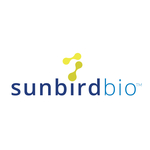DUBLIN--(BUSINESS WIRE)--The "Insect Feed Market - Growth, Trends, COVID-19 Impact, and Forecasts (2022 - 2027)" report has been added to ResearchAndMarkets.com's offering.
The insect feed market is projected to register a CAGR of 11.7% during the forecast period (2022-2027).
The COVID-19 pandemic disrupted the working of several markets, including the insect feed market during the initial lockdown. The insect feed for aquaculture was negatively impacted mainly due to the decreasing international sea food trade, as restrictions on the fishing industry have minimized the yield and production. Adding to that, the global demand for seafood from restaurants and the hospitality industry has also dropped dramatically as lockdowns led to stay-at-home orders, closure of restaurants and other foodservice establishment. The insect feed sector, at present, has challenges, such as commercial-scale production, when compared to conventional animal feed products. However, factors such as the high feed conversion ratio of insects, low requirements for production area, and favorable government policies are driving the insect feed market. This is further anticipated to drive the market in the coming years.
Asia-Pacific dominated the global market, having the largest share, and Europe is projected to be the fastest-growing market in the years to come. In Asia-Pacific, the growing meat consumption compelled the demand for nutritious insect feed in recent years. Along with this, investments by the insect feed companies in the region have fueled the market growth. Similarly, in Europe, government initiatives, coupled with maintenance of vast poultry by the farmers, are projected to drive the revenue of the insect feed market during the forecast period.
By animal type, the aquaculture segment dominated the market among other animals in 2021. Increasing demand for farmed fish across the world has led to a rise in the prices of fishmeal and fish oil. Hence, insect feed serves as a viable protein-rich option for aquafeed, thus, driving the market.
Key Market Trends
High Feed Conversion Ratio of Insects
The population on the earth is expected to increase to 9 billion by 2050. The growing population and increasing demand for protein-rich food from livestock, poultry, and fish, pose serious food security challenges for the future. Hence, the demand for production and consumption of edible insects is increasing pertaining to their high nutritional value and low risk of transmitting zoonotic diseases.
Insects contain more protein and low fat compared to traditional meats, such as poultry and livestock. They also emit fewer greenhouse gases and ammonia than conventional livestock and can be grown on organic waste. This is driving the market growth. Further, insects are efficient in converting feed into protein. For instance, crickets need 12 times less feed than cattle, four times less feed than sheep, and half as much feed as pigs and broiler chickens to produce the same amount of protein. Hence, rearing of these insects and usage as feed for animals has become prominent in developed and developing countries.
The need for grain and protein feeds is likely to increase as the demand for meat is rising. For instance, livestock is fed about 6 kg of plant protein to get 1 kg of animal protein. Feed-to-meat conversion rates (Amount of feed needed to produce a 1 kg increase in weight) vary widely depending on the animal types and the production practices used.
Asia-Pacific Dominates the Market
In Asia-Pacific, the growing meat consumption compelled the demand for nutritious insect feed in recent years. Along with this, investments by the insect feed companies in the region fueled the market growth. For instance, in 2017, Protix partnered with Buhler Insect Technology Solutions, based out of China, to enhance the insect feed production in the country, where Buhler, with the help of the former, installed a pilot facility to process fly larvae and mealworms for animal feed. This has led the companies to develop new forms of insect feeds to provide protein-rich diet to livestock. Moreover, local Chinese companies, like Haocheng Mealworms Inc. and Guangzhou Wuliang Biotechnology Co. Ltd, have been producing insect feed rather than relying on soybean imports from the United States for animal feed. This has decreased due to the US-China trade war. Moreover, recently, in 2019, a crop-eating pest damaged a lot of animal feed crops in the country. Such developments in the country are fueling the insect feed market's revenue in China. Hence, the region is anticipated to witness robust growth owing to the increasing demand for insect feed across various countries such as China, South Korea, and Japan, coupled with increased animal protein demand.
Competitive Landscape
The global insect feed market highly fragmented in nature in 2021, as the majority of the companies are new in the market studied and hold only a small fraction of the market share. As per the companies profiled in the study, Europe has the largest number of major players, followed by Asia-Pacific. Alltech Coppens, Protix, Enterra Feed Corporation, Ynsect, and Enviroflight are some of the prominent companies that accounted for the majority share in the global insect feed market in 2021. Acquisitions, partnerships, and expansions are some of the important strategies adopted by insect feed producing companies for their research support and marketing purposes. For instance, Enviroflight, Alltech Coppens, and Protix are the three companies that successfully adopted these strategies.
Companies Mentioned
- Alltech Coppens
- Multibox
- nextProtien
- EnviroFlight
- Protix
- InnovaFeed
- Tiny Farms
- Ynsect
- AgriProtien
- Enterra Feed Corporation
- Hexafly
- Entofood
For more information about this report visit https://www.researchandmarkets.com/r/rwh2lg
Contacts
ResearchAndMarkets.com
Laura Wood, Senior Press Manager
[email protected]
For E.S.T Office Hours Call 1-917-300-0470
For U.S./CAN Toll Free Call 1-800-526-8630
For GMT Office Hours Call +353-1-416-8900











